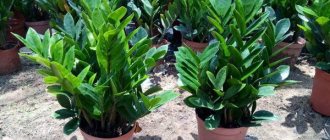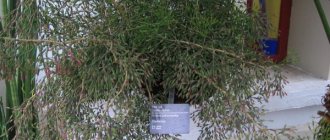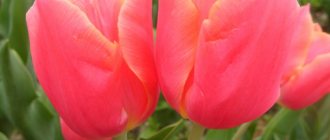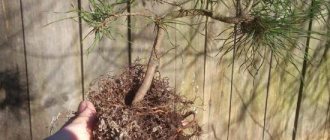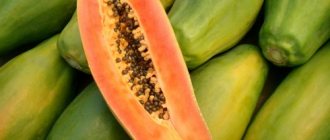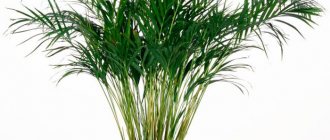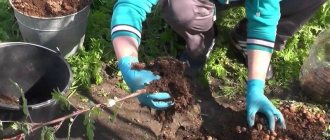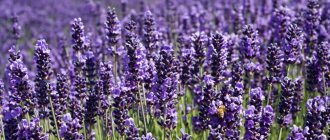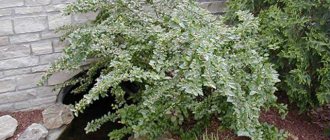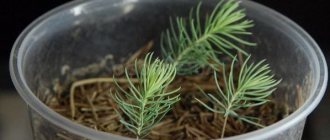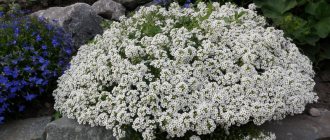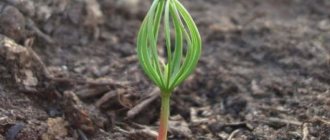Author's rating
Author of the article
Yakov Pavlovich
Professor, Head of the Department of Vegetable Growing
Articles written
153
Growing coniferous plants in personal plots is a fairly common phenomenon. While spruces, thujas and junipers are common inhabitants of gardens, cedars are much less common. This is primarily due to their large size, which is why the growing area cannot be small. If the plot allows, then if you wish, you can plant this magnificent taiga tree at home. Cedar, planting and caring for which requires compliance with the rules of agricultural technology, will become a unique decoration of the garden over the years.
Advantages of growing cedar on the site
In the countryside, growing cedar to obtain a valuable nut is possible, but you will have to wait a long time for harvests - from 40 to 80 years. At the same time, by planting such a tree, it will be possible to significantly improve the air quality in the area, since even one tree releases a large amount of substances valuable for health - phytoncides. They help clear the air of viruses, and when inhaled into the body, they help strengthen the immune system.
The main reason why cedar is planted on a site is its visual appeal, which makes one want to have such an unusual tree. Old natural cedar trees can reach a height of 40 meters, but it will take them more than 100 years to achieve this.
Description of Siberian cedar
Siberian cedar pine (Siberian cedar) is a representative of the genus Pine and belongs to the Pine family. An evergreen, coniferous tree capable of reaching up to 45 m in height. The crown is multi-peaked with thickened branches and can have a diameter of up to 2 m. The trunk is straight, with scaly bark. Perennial shoots are brown in color and have long red hairs on their surface.
The needles are dark green in color, soft to the touch, with a pointed end. It grows in bunches of 5 pieces, triangular in cross section. The root system is taprooted, with many branching roots. As the tree grows, an anchor root system develops, which ensures the stability of the plant, because it goes 2 m deep into the soil.
Important! Fruiting of Siberian cedar begins in the 60th year after planting with an interval of 3 to 10 years.
The cones are large, oval in shape, at the beginning of growth they have a purple tint, and as they ripen they become brown. Their diameter is up to 5 cm, and their length is up to 13 cm. The cones ripen throughout the year, after which they fall off the tree. Each fruit can contain from 30 to 150 pine nuts. The seeds are 1.5 cm long and up to 1 cm in diameter. The yield from one adult tree reaches up to 13 kg.
Varieties and description
There are several types of cedar trees. You can grow any of them on your plot, since the rules of agricultural technology will be the same. Most often, in garden centers and nurseries you can purchase seedlings of the following most popular and unpretentious varieties of cedar:
- Himalayan cedar - this variety has a large number of varieties and can grow in both sun and shade. The plant tolerates haircuts;
- Siberian cedar is a tree of only natural shape, which always reaches a very large height, which is why in a small area it can become inconvenient over time. In nature, nuts are collected mainly from such cedar;
- Far Eastern (Manchurian) cedar is a tree that produces cones and nuts 2 times larger than Siberian cedar. It is not often grown in garden plots.
The most popular in landscaping is the Himalayan cedar, since breeders have developed a wide variety of its varieties with radically different crowns and needle colors from green to blue. The height of trees depends on the variety, and it is possible to choose the optimal option for a particular area.
deodar
How to grow cedar from a nut
Cedar grows on the plots of many gardeners. As a rule, they are grown from ordinary nuts.
How to do the same:
- For successful cedar harvests, a wet cone with seeds must be treated with cold, in the freezer. We put it there for three days.
- Then we take it out and take out the nuts.
- Use an awl to make drainage holes in the bottom of the plastic bucket.
- Pour the soil into a plastic bucket and plant the nuts.
- We water, close the lid and place the container on the battery, placing a towel folded several times under it. Warmth is needed for rapid germination.
- When shoots appear above the ground, remove the lid.
- We are preparing a new home for the cedar. Place the inverted pot at the bottom of the bucket. This will be the stand.
- Place the container with the seedlings on the inverted pot.
- Pour water into the bucket. It should not reach the container with plants.
- Cover the bucket with glass. The result was a greenhouse.
By summer, your small cedars will get stronger, and you can plant them in the garden.
Condition requirements
To grow cedar on your site, it is necessary that the existing conditions suit it. If they do not meet the requirements of the plant, then there is no point in trying to plant a tree, since even with good care the seedling will not develop and will die.
Regions suitable for cultivation
It is possible to grow cedar in most regions of Russia. These trees grow easily in Siberia, the Urals, the Far East and the Moscow region. You can also grow them in the southern regions, since cedars tolerate not only frost, but also heat. Their roots go deep into the soil and receive water even during periods of severe drought.
Temperature, humidity, lighting
Cedar is able to withstand frosts below -35 degrees in winter, and heat of more than +35 degrees in summer. Because of this, in most regions of Russia this plant feels good, easily adapting to the conditions in a particular place. The area where cedar is grown must be well lit, although there are also selected varieties that can grow in partial shade.
Soil moisture is required to be moderate. Water should not stagnate in the area, but the soil should not dry out completely. Mature plants that already have deep roots and access to groundwater are able to withstand dry periods. Young seedlings require mandatory watering if the weather is hot and there is no rain for a long time.
Soil and groundwater
To grow cedar, choose nutritious and light soil. The tree grows well on loam. It is imperative that the soil is well drained, then the roots of the seedling will not begin to rot due to stagnation of water. Soils suitable are neutral or slightly acidic. The acidity pH should be between 5 and 7 units.
See also Peanuts: beneficial properties and contraindications for human health
The root of the tree goes to a considerable depth, and therefore it is important that the groundwater lies far enough. If they are close to the surface, the tree will die when the growing root reaches the aquifer too quickly, since in this case the root system will not be able to fully develop.
Types and varieties of cedar with photos
The Lebanese cedar (Cedrus libani) is a symbol of this country. It is characterized by an intense gray-blue and even silver color of the needles. Sensitive to severe frosts.
"Glauka Pendula"
The most popular tree form that can be found in many conifers is “Glauca Pendula”. Lebanese cedar of this variety has weeping, long branches with short silvery needles collected in bunches.
Adult specimens form a beautiful silver tent of shoots. Free cutting can be used to create different shapes. The disadvantage of this variety is its high sensitivity to harsh winters.
Types and popular varieties of roses
Variety "Nana" is a dwarf, round, green bush. "Katere" is a miniature variety with needles of a rich blue-green color and a horizontal growth habit, fits perfectly into the rocky landscape of rockeries.
"Katere"
Atlas cedar (Cedrus atlantica) , native to Morocco and Algeria, is quite winter-hardy The most popular varieties are:
— Atlas cedar glauca with a bizarrely curved trunk and drooping branches with a cascading effect;
- dwarf form "Compacta Nana".
Himalayan cedar or deodara (Cedrus deodara) is native to the Himalayan mountains. It is distinguished by a wide variety of varietal forms and is able to withstand severe frosts.
'Bushes Electra' is a small pyramidal tree with short, delicate, blue-green needles.
“Prostrate Beauty” is a tree with a horizontal growth habit and blue-green, delicate needles. In young specimens the crown is almost flat; with age it develops upward if not pruned.
"Girard's Weeping" with emerald needles and long weeping or slightly twisted branches. Shape similar to "Glauca Pendula"
“Snow Sprite” is a decorative form of dwarf cedar with a conical, dense crown and young shoots of a white hue.
"Blue Snake" is a unique Dutch variety with blue needles and creeping shoots. If you remove side growing shoots, you can create interesting tree shapes with a curved trunk and branches.
"Feelin Blue" is a dwarf variety with a blue-green crown. Ideal for creating cedar bonsai or topiary figures.
The “Aurea” varieties are characteristic of all of the listed types of cedar wood. Their delicate golden needles are sensitive not only to frost, but also to direct midday, summer rays, which cause sunburn of the needles.
Selection and preparation of a site for cedar
To plant a cedar tree on a personal plot, it needs to choose the right place in which it will grow. A mistake at this stage will lead to problems in the future, since later replanting a large tree will be difficult, and sometimes impossible. The area on which the cedar will grow should not be passable, since the tree does not tolerate compacted, trampled soil and cannot grow in such conditions. Also, the place must be protected from drafts, which are also very harmful.
A lot of sun is required, since only under this condition a beautiful spreading crown is formed and the most decorative appearance is acquired. Other trees should be far enough away from the cedar, no closer than 7 meters. The minimum permissible distance to the nearest building is 4 meters.
In a garden plot in a chosen place, a planting hole is dug, the depth and diameter of which are the same - 60 cm. At its bottom, a drainage layer 15-20 cm thick should be made of expanded clay or crushed stone. Fertile soil is poured on top of it with the addition of mineral fertilizers intended for for coniferous plants. Then 10 liters of water are poured into the hole and left to settle for 5-7 days. After this, the cedar is planted in the same way as any other tree.
Planting cedar pine using nuts: preparing seeds
To obtain seeds, it is better to use not ready-made pine nuts, but rather whole cones. Because manufacturers of nuts for food thermally treat the material. This has an extremely negative effect on the viability of the seeds. The best time to start work is from September to December.
Siberian cedar pine
Hull 20-30 seeds and prepare them for planting:
- Rinse with warm water to remove the resin layer. It will block the access of water to the seed during further manipulations. Treating the surface with a sponge or toothbrush also helps in this matter.
- Sort out the planting material. The seeds must be free of mold and bad odor.
- Disinfect them by placing them in a 5% solution of potassium permanganate. Soak for a couple of hours. You can also use the fungicide Maxim.
- Perform stratification. Place the seeds in a container with cold water (0 °C) for 3 days. The water needs to be changed daily. Remove seeds that float to the surface: they are guaranteed not to sprout.
- Simulate wintering for planting material. Mix it with forest turf, clean coarse sand and peat. Pour it all into a wooden container with ventilation holes, water it and place it in a cool place at +4 °C for at least 3-6 months. Many people use a refrigerator for these purposes.
- Moisten the soil a couple of times a month and check the seeds. If mold appears on one, remove it from the box.
Some gardeners simply mix seeds with sand. Then it is placed in a cloth bag. Whatever method you choose, it would be ideal to prepare the material for planting by March or April. The shell of at least one of the nuts should crack. If this does not happen for a long time, transfer the seeds to a slightly warmer place.
Attention! Cedar seeds, when stored correctly, remain viable for up to 8 years. However, it has been noticed that it is more effective to plant fresh specimens.
Timing and rules for planting in open ground
Cedar should be planted in the garden in late autumn. At this time, the plant is already at rest and can easily tolerate transplantation. The absence of heat in the near future also has a positive effect. It is also allowed to plant cedar in the spring, but in this case the seedling will need to be shaded so that it does not suffer from the bright sun.
Seeds
It is not justified to plant cedar with seeds on the site, since the growing process will be very long, and the probability of growing seedlings is only 50%. The seeds will take a long time to germinate, and only after going through natural stratification and overwintering in the garden bed.
This method of propagating cedar is usually used only on farms to obtain planting material, which is subsequently sold. Nuts are also planted in nurseries where material is prepared for planting in forests.
Expert opinion
Stanislav Pavlovich
Gardener with 17 years of experience and our expert
Ask a Question
Important! If you want to get a cedar tree on your site, you should not choose the method of planting seeds.
Seedlings
Planting a cedar seedling on a plot is the best option, which gives almost 100% survival rate of plants. Such seedlings are planted in a pre-prepared hole and tied to a peg so that they maintain an even position. It is better to plant with an assistant, since it is difficult to hold the tree straight and at the same time cover its roots.
Twigs
It is possible to propagate cedar by cuttings. For this, only green material is used, which is taken from already mature fruit-bearing trees. Such cuttings should be planted in the same way as cuttings of any other plant. Before planting them in a bed for rooting, it is necessary to soak the planting material in a root formation stimulator. The survival rate of the branches is low, and therefore this method is justified only for industrial cultivation.
Planting cedar with seeds and seedlings. Which method to choose
It is not the cedar itself that is adapted for planting far from its native habitat, but the Siberian cedar pine. It belongs to a different genus of trees, but is popularly called cedar. Real cedar is a more heat-loving tree and has a huge crown. A thick and tall pine tree can fit perfectly into the landscape composition of the site. It does not take up much space, but gives the garden landscape an effect of peace and sophistication.
Attention! When planting pine pine, pine nuts or ready-made seedlings from a nursery or store are used.
Growing a tree from pine nuts is a complex process. It is important to choose good seeds. You will have to find a few cones and carefully remove a couple of dozen seeds from them in order to have some kind of safety margin. Seeds that have started to grow will also need a lot of care. However, growing cedar from seedlings is even more difficult: they do not take root well in the new land.
What care does a tree need?
An adult plant does not require special care. Young trees will need care. Caring for cedar in general is not difficult, and it is only important to follow the rules of agricultural technology.
Irrigation mode
During the summer months, water the plant frequently and generously to ensure the soil always remains moist. The water should be settled and warm. It is most convenient to water in the evening, when moisture from the soil will not evaporate quickly under the sun's rays.
Top dressing
Fertilizers need to be applied 2 times per season. In the spring it is necessary to feed the cedar with organic fertilizers. To do this, you can use natural organic matter, for example, bird droppings or mullein, or a special preparation “Bioclad”. In summer, fertilizing is not required. In autumn, the tree is fertilized with mineral compounds containing phosphorus and potassium. They help plants survive the winter. You should choose formulations for conifers.
Loosening the tree trunk circle
Cedar needs good soil ventilation. It is necessary to loosen the soil around the tree trunk at least once every 10 days. It is best to do this after watering. The root system of the tree is wide and therefore, as the plant develops, the diameter of the trunk circle, which needs to be loosened, will increase.
See also Walnut beneficial properties and contraindications
Trimming and shaping
It is necessary to trim cedar only if it is necessary to create a crown of a special shape. When a tree is grown naturally, this procedure is not carried out. The tree's lower branches may be removed to form a tall trunk, or the crown may be thinned out to make it light. If you decide to trim a tree, then the work must be carried out with sharply sharpened tools and properly disinfected with alcohol.
Preparing for winter
In autumn, the main preparation of cedar for winter is its moisture-replenishing watering and fertilizing with mineral fertilizers. Young plants also need to be protected from the heavy snow load on them. To do this, they are covered with a net. It is required to prevent excessive snow from sticking to the branches, which can break them with its weight.
Expert opinion
Stanislav Pavlovich
Gardener with 17 years of experience and our expert
Ask a Question
Important! Mature trees do not require a mesh shelter, since their branches are already strong and can withstand heavy loads without damage.
Transfer
Young plants are replanted in late autumn with a large lump of earth to avoid damage to the root system. A mature tree cannot be replanted. The maximum growth rate of cedar is 45 cm per year, but this is only achievable under ideal conditions. Thus, if you have to replant in the first years after the tree is planted, it is not yet very large and the procedure is possible. It is difficult to dig up a growing cedar on your own. It is advisable to use technology for this in order to provide the plant with a sufficient earthen lump. Only in this case will the transplant be safe for the tree.
Planting and caring for Siberian pine pine: instructions for beginner gardeners
Since ancient times, this coniferous crop has been considered a majestic giant tree.
However, scientists have developed decorative varieties that are successfully grown in summer cottages:
- “President” (has a cone-shaped crown, grows up to 3 m);
- "Narcissus" (maximum height about 1 m, crown shaped like a ball);
- “Recordist” (spherical tree, height up to 3 m, bears fruit abundantly).
High-quality seedlings are purchased from specialized nurseries. They come with an open or closed root system. Planting is carried out in early spring before the buds begin to swell, or in the fall, when the trees shed their leaves. Regardless of the chosen season, the process is carried out in accordance with generally accepted instructions.
It is best to plant a pine tree that is already about 10 years old. It should have well-developed rhizomes and branches.
Ideal site and suitable soil
The majestic culture prefers places where there is an abundance of sunlight. Therefore, on the territory of a country house, choose a spacious area, away from trees with a spreading crown. It is important to take into account the height of an adult pine tree. Even when planting hybrid low-growing varieties, seedlings are placed at a distance of 5-8 m from other crops, residential and commercial buildings.
Despite the fact that the plant loves an abundance of light, for 10 years young trees have been shaded during hot periods.
Coniferous crops love sandy and loamy soils of a moist nature. If the site is dominated by clay soil, it is fertilized with humus and peat. High acidity is eliminated with lime. The result is ideal soil for cedar pine.
“Arrangement” of the pit and planting
After choosing a location and preparing the soil, they begin to build a funnel. To do this, carefully loosen the ground and dig a hole 1 m deep and about 1.8 m wide. In principle, its size should exceed the volume of the root system by about 20 cm.
A drainage layer is laid at the bottom using any of the following materials:
- crushed stone;
- ceramic pieces;
- small stone;
- gravel.
If necessary, the excavated soil is combined with sand, peat and compost at a ratio of 1:1:1. The components are thoroughly mixed and left next to the funnel.
How to plant cedar pine so that it successfully takes root on the site? Agronomists advise placing the seedling in the hole very carefully, trying not to damage the roots. Cover the plant with fertilized soil, periodically compacting the layers. After planting, the pine tree is watered generously. For the first time, 20-30 liters is enough. The surface is covered with mulch.
It is advisable to stick a stick next to the tree, which will serve as a reliable support for it in the future.
Systematic care
The young seedling has successfully developed in the new area and is provided with competent care. Water the plant as the soil dries. During hot periods, the procedure is repeated more often. After each watering, the area around the trunk is weeded, going deep into the soil by about 10 cm. The weeds are piled next to the crop. It is used as a natural fertilizer. Once every 1.5 months, mulching is carried out using peat.
Fertilizers are applied only the next year after planting. Substances containing :
- nitrogen;
- phosphorus;
- potassium.
They are purchased in specialized stores. For one Siberian pine tree, 10 liters of fertilizer diluted in water is enough. In late autumn, the tree trunk area is covered with additional mulch. It stimulates the development and protection of the root system from winter cold.
It is advisable not to cut off the side branches of Siberian pine at first. The presence of needles accelerates the process of cultural development.
Protection from pests and diseases
Despite their power, young seedlings often suffer from insects. Bark beetles lay eggs in the trunks of the crop and gnaw out a huge number of tunnels. Hermes Siberian sucks out the life-giving moisture of a young seedling, which has a detrimental effect on its development. Get rid of pest infestations using traditional insecticides.
Gardeners are also faced with various diseases of cedar pine that destroy it from the inside. Most often the culture is affected by:
- pine needle rust;
- shoot cancer;
- Smolyanka
It is possible to save a plant from infection only at the initial stage. Therefore, experts advise treating the crop with preparations that strengthen the root system and the outer part.
What does cedar suffer from?
Diseases are uncommon and usually only affect weakened plants.
- Cedar rust. Yellow bubbles appear on the tree, which gradually dry out and crumble into white powder, which are fungal spores.
- Resin cancer. The most dangerous disease for cedar, due to which the tree’s immunity drops and it becomes vulnerable to most diseases and pests. Pathology develops in the absence of rust treatment.
- Aecidiospor. A fungal disease that cannot be treated. Indentations filled with an orange mass appear on the plant. The cedar gradually weakens and dies.
To prevent the occurrence of diseases, it is necessary to provide the tree with high-quality care and regular treatments against pests, which significantly weaken its immunity. For any work related to cutting cedar, it is necessary to disinfect the tool and cover all cut areas with garden varnish.
Insect pests of crops
Pests most often attack young plants. Although many insects cannot tolerate phytoncides, cedar still has enemies. The pests that damage it the most are:
- scale insect;
- spider mite;
- spruce moth;
- moth;
- spruce sawfly;
- spruce mealybug.
To protect against the appearance of pests, it is necessary to regularly treat cedar with preparations to combat them. They are purchased at garden centers and used strictly according to the instructions given by the manufacturer.
Reproduction options
There are several ways to grow pine. To grow coniferous cedar, you need to purchase seeds or seedlings from a garden nursery.
Planting cedars from seeds
Long term growing method. Planting material must be treated with potassium permanganate. A mixture of coarse sand should be used as primer. The nuts should be placed in the holes and sprinkled with a small layer of sawdust. To stimulate growth, you can place the container with the seeds in a cold room.
Periodically you need to moisten the soil.
Germination of Siberian cedar seeds.
After the first shoots appear, you can move the container to a warm room. After strengthening the sprouts, young cedar trees should be planted in separate containers.
You can experiment and sow treated seeds in open soil. But this is very risky. Often the planting material does not germinate.
Growing cedar seedlings
It is preferable to buy seedlings with a closed root system. The ideal age for planting material is three-year-old trees. The average size of a pine tree should be from thirty centimeters to three meters, depending on the subspecies.
